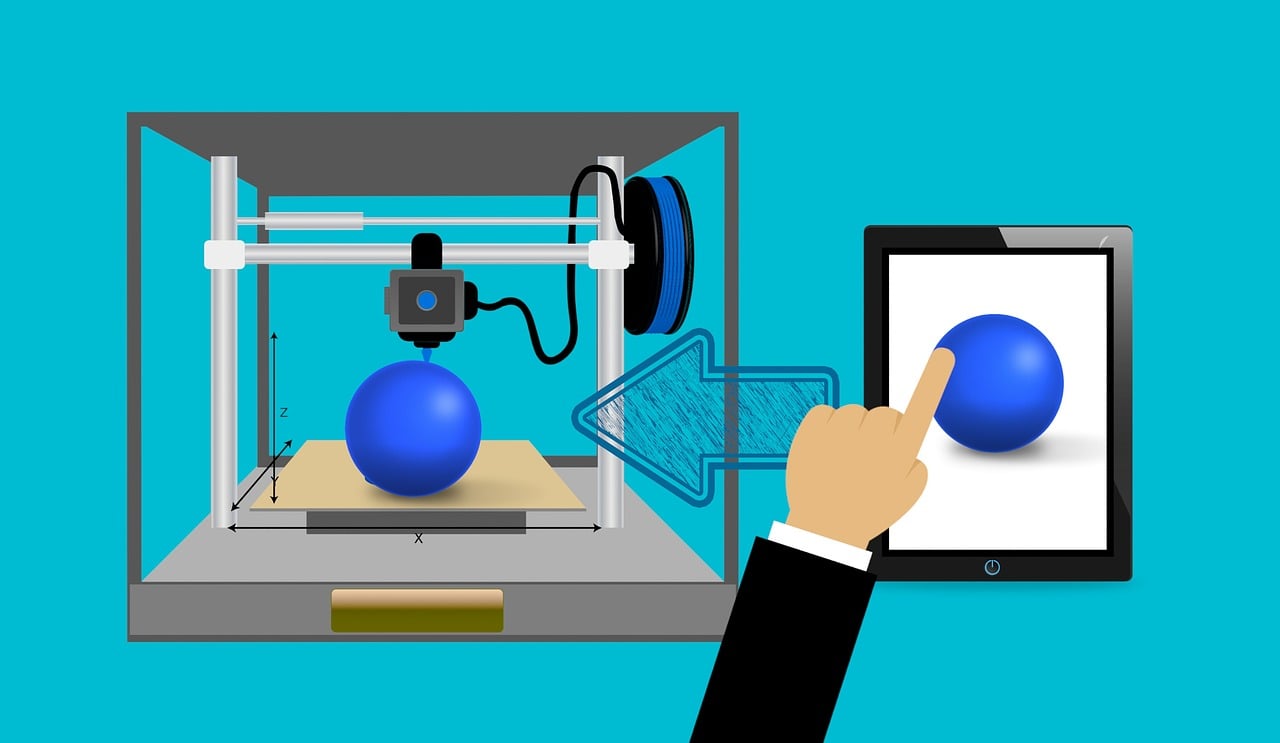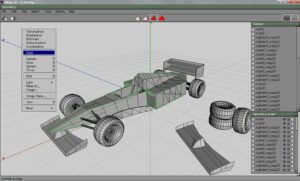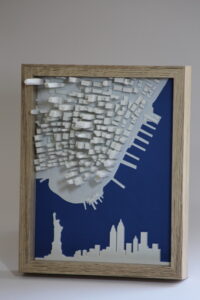Unlock the captivating world of 3D printing! It’s where your imaginings become reality. To explore the brave new world of free 3D models, let’s get started on this creative and innovative voyage. You’ll soon master the art of 3D printing, with our tips and tricks.
Understand the power of 3D printing. Free 3D models are game-changers, making high-quality designs available to all. With just a click, you can bring to life the wildest of ideas. But be choosy; not all free models are equal. Consider design complexity, printability, and file compatibility.
To illustrate its influence, take a look at the history of modern manufacturing. People have used these accessible resources to turn their ideas into tangible products. Prosthetics, architectural models – free 3D models are causing waves of innovation in many industries.
We’ll show you how to navigate 3D printing. Our invaluable tips will help you unlock your creative potential, so you can turn imagination into reality. Let’s go!
What is 3D printing?
3D printing, also known as additive manufacturing, is a revolutionary technology. It allows you to create three-dimensional objects from digital designs. You do this by layering materials like plastic or metal. This process takes only a few hours, making 3D printing a valuable tool in many industries.
A tip for 3D printing is to use free models online. Many websites have a wide selection of pre-designed models that you can download and print. They are suitable for different purposes, like a toy for your child or a new product prototype. This saves you time and effort, as you don’t have to design them from scratch.
It’s essential to know the techniques and materials used in 3D printing. PLA (polylactic acid) is a popular choice. It’s easy to use and biodegradable. Other options include ABS (acrylonitrile butadiene styrene), which provides greater durability. Experiment with different materials to find out which one works best.
Did you know that 3D printing has a fascinating history? It all began in the 1980s when Charles Hull invented the first stereolithography apparatus (SLA). This invention sparked a chain reaction of advancements, leading to new possibilities in many industries.
Benefits of using free models for 3D printing
Utilizing free models for 3D printing has numerous benefits which can enhance the printing journey. From a large library of designs to saving money and time, these models provide a range of advantages.
- Access a Variety of Designs: Free model repositories are full of 3D printable designs, allowing users to try out new ideas and add intricate details.
- Saves Time & Effort: Instead of creating models from scratch, using free models can reduce the time and effort in the design process.
- Economical: By using free models, individuals can save on the cost of hiring professional designers.
- Community Collaboration: Free model platforms promote creativity, learning, inspiration, and the exchange of ideas.
Exploring different niches in 3D printing with free models expands knowledge and pushes creative boundaries. From intricate figurines to complex mechanical parts, different free models open up opportunities for innovation.
To make the most out of these models, consider these suggestions:
- Validate Design Compatability: Check that the free model is compatible with your hardware and software setup. Inspect file format requirements and printer settings to avoid issues.
- Customize Models: Modify free models for your own needs. This can include resizing, parametric adjustments, or adding personal elements.
- Give Credit & Share Modifications: Show appreciation for designers by crediting them. Also, share your modified designs with the community.
By following these suggestions and utilizing free models for 3D printing, enthusiasts have access to endless possibilities. Happy printing!
Where to find free 3D printing models
Finding 3D printing models for free can be a cinch when you know where to look. Let us give you a few tips to help you find the ideal models for your projects:
| – Online repositories: | Check out sites like Thingiverse and MyMiniFactory. You can find a great selection of free 3D printing models here. Search and select the one that catches your eye – you’re set! |
| – Community forums: | Connect with other enthusiasts on platforms like Reddit’s r/3Dprinting or specialized forums. You’ll be exposed to a huge collection of shared files. Have a chat, get advice, and enjoy the sense of community. |
| – Design marketplaces: | CGTrader and TurboSquid offer both paid and free models. You may have to dig a bit but you will find high-quality free files. |
| – Open-source initiatives: | Organizations like NASA’s 3D Resources or OpenSCAD’s library provide access to their internal libraries for downloading. And, they are reliable and credible. |
| – File sharing platforms: | Visit GitHub or GitLab. Here, designers upload their work under open-source licenses. You can explore specific niches or find unique designs tailored to your needs. |
| – Social media communities: | Join Facebook groups or follow Instagram accounts about 3D printing. You never know what unique designs might be hiding there. |
Keep an eye out for hidden gems in obscure platforms or blogs from niche communities. You might be pleasantly surprised.
Pro Tip: When hunting for free 3D printing models online, read user reviews and check model licenses before downloading. That way, you can ensure the model is of good quality and suitable for your intended use. Have fun printing!
Tips for selecting the right free models
Choosing the right free models is essential for mastering 3D printing. Here are a few tips to help you make the right choices:
- Analyze complexity: Match the model to your skill level & 3D printer’s capabilities.
- Check file format: Ensure the free model is available in software-compatible format.
- Read reviews/ratings: Look for user feedback to gauge its quality & potential issues.
- Verify license: Make sure the license allows you to use it for your purpose.
- Evaluate printability: Examine the mesh & geometry to confirm printability.
- Look at post-processing: Assess if further modifications are needed after printing.
Also, take note of any unique details mentioned by the creator. Keeping these tips in mind will make 3D printing a great experience!
Explore many options now and start 3D printing – unleash your creativity! Have fun!
Preparing the 3D printer and materials
- Make sure your 3D printer is clean and free of debris.
- Check all cables are connected securely.
- Level the build plate or bed properly to ensure adhesion.
- Calibrate the extruder temperature and flow rate settings according to the manufacturer’s guidelines.
- Select a filament type based on factors such as strength, color, and flexibility.
- Load the filament according to the instructions.
- Regular maintenance is essential for optimal performance and longevity.
- Replace parts like nozzles and belts when necessary.
- Double-check you have enough filament remaining before starting a new print job.
- Avoid running out of filament mid-print, as it can be frustrating and result in an incomplete print.
Importing and preparing the model for printing
- Get the model: Find the 3D model file and add it to your slicing software. Use the software to control and prepare the model for printing.
- Resize and position: Change the size of the model to what you want. Check that it fits in your printer space without any problems. Also, make sure the model is stable during printing, and use the least amount of support material.
- Spot errors: Examine the model to see if there are any issues that could affect printing. Fix any non-manifold geometry, intersecting surfaces, or other mistakes before moving on.
- Add supports if needed: Some designs need support structures to stick and be stable during printing. Most slicing software has tools that make supports or let you put them in manually.
Remember these tips:
- Simplify complex models: Big or complex models can cause long print times and issues. Try cutting down details, simplifying sections, or using decimation.
- Pick the right materials: Your printer needs specific materials. Choose the right filament or resin for your printer and project needs: strength, flexibility, color, etc.
- Calibrate your printer: Regular calibration gives you accurate prints. It ensures layer adhesion, correct extrusion rates, and good quality.
Follow these tips to import and prepare 3D models without wasting time or quality.
Printing the model
Printing a 3D model? Here’s a guide to help you out!
1. Prepare your printer: Check everything is in place, like the level of your print bed, filament loading, and software settings.
2. Choose a file format: Your model must be in a suitable format that your printer can read, like .stl or .obj. If not, convert it!
3. Slice your model: Slice software divides your model into layers and creates instructions for the printer. Tweak settings to your desired specs.
4. Start printing: Send the sliced files to your printer and monitor the progress. Fix any errors that pop up.
Additional details: Different printers may need unique settings and adjustments. Read the manufacturer’s manual or online resources. Post-processing might be needed too, like removing supports, sanding, or adding surface finishes.
Post-processing and finishing touches
Polishing? Get smooth surfaces with sandpaper or polishing tools. Paint for vibrant colors and hiding imperfections. Varnish your print for extra protection from dust, moisture, and UV rays. Sand for precise shapes and to get rid of layer lines. Assemble the parts with adhesive or screws for complex objects. Surface treatment with heat treatment or acetone vapor smoothing for improved finish.
Essential is quality control. Check for defects, warping, rough edges, or stringing. Tweezers or knives help in removing small imperfections.
Experimenting’s a Pro Tip! Try different finishes, paints, or coatings to get unique effects that fit your desired aesthetic.
Troubleshooting common issues
Troubleshooting 3D printing can be tricky, but it’s important to stay patient and keep your printer and surroundings clean. Dust can wreck your prints! I’ve had my own experience with an issue that wouldn’t go away. After hours of trying, I discovered the nozzle was clogged with residue. Cleaning it out did the trick and I was able to resume printing. This taught me to stay on top of maintenance.
It’s normal to run into problems while 3D printing. But with knowledge and determination, you can conquer these obstacles and unleash your creativity. Let the 3D printing begin!
Conclusion
In this modern age of tech, 3D printing has become a game-changer. It can transform virtual designs into physical objects. We’ve explored 3D printing using free models and found tips to help you master this tech.
We’ve looked at how to find and use free 3D models online. They can be customized to suit your needs. Plus, it’s important to make sure the files are compatible with your 3D printer.
We’ve also given advice on optimizing print settings with materials like PLA or ABS. This includes adjusting layer height, infill density, and support structures. Doing this increases print quality and reduces material wastage.
Finally, we’ve talked about post-processing techniques to improve the output of 3D prints. This includes smoothing surfaces, painting, and applying finishes like clear coat or varnish. These methods can make your creations look better and last longer.
Frequently Asked Questions
FAQ 1:
Q: What is 3D printing?
A: 3D printing, also known as additive manufacturing, is the process of creating three-dimensional objects from a digital model by depositing material layer by layer. It allows you to turn virtual designs into physical objects.
FAQ 2:
Q: What are free 3D models?
A: Free 3D models are digital designs created by individuals or organizations that can be downloaded and used for 3D printing without any cost. These models are often shared online in various repositories and can range from simple to complex objects.
FAQ 3:
Q: Where can I find free 3D models for printing?
A: There are several websites and online platforms where you can find free 3D models for printing, such as Thingiverse, MyMiniFactory, Sketchfab, and Cults. These platforms offer a wide range of designs that you can browse, download, and print.
FAQ 4:
Q: What should I consider when selecting a free 3D model for printing?
A: When selecting a free 3D model for printing, it’s important to consider factors like the printing technology you’ll be using, the size and complexity of the model, and any necessary support structures. Additionally, you may want to check the model’s license to ensure it allows for commercial or personal use.
FAQ 5:
Q: How can I optimize printing with free 3D models?
A: To optimize printing with free 3D models, you can follow these tips and tricks:
1. Check and repair the model’s file using software like Meshmixer or Netfabb.
2. Orientate the model for optimal printing, considering factors like support structures and material usage.
3. Adjust printer settings, such as layer height and infill density, to achieve the desired outcome.
4. Use a suitable material and ensure proper bed adhesion for successful printing.
5. Post-process the printed object if needed, like removing support structures or sanding rough surfaces.
FAQ 6:
Q: Are there any limitations when working with free 3D models for printing?
A: Yes, there can be limitations when working with free 3D models for printing. Some models may have design flaws or require additional modifications to be printable. Complexity and size can also impact printing success. Additionally, free models may not always come with detailed instructions or support, so troubleshooting issues might require additional research or expertise.



